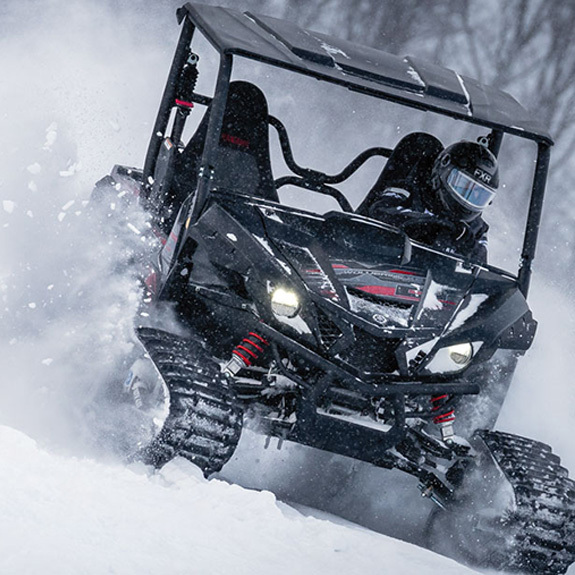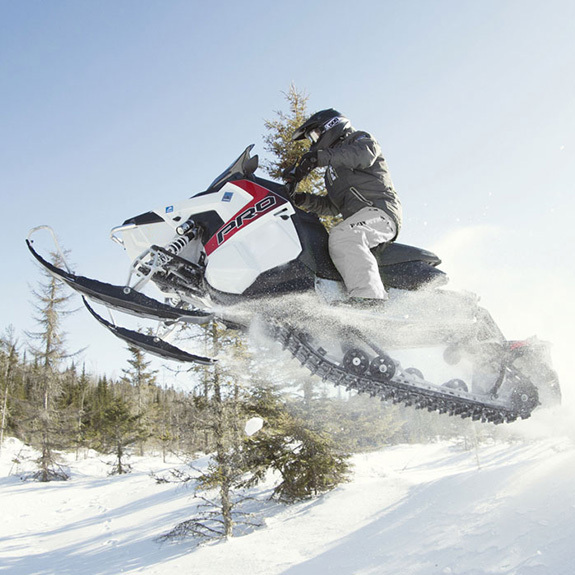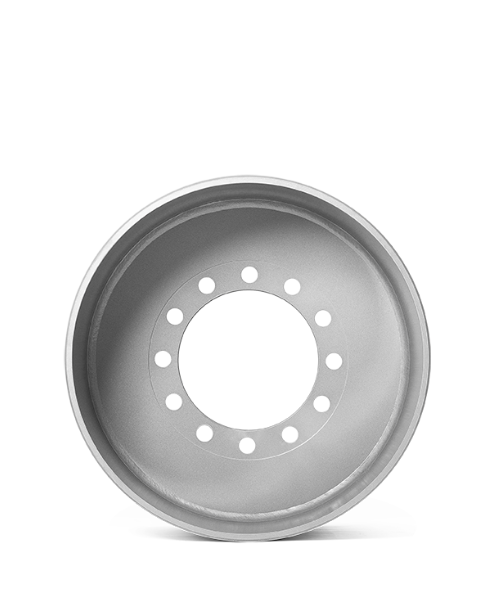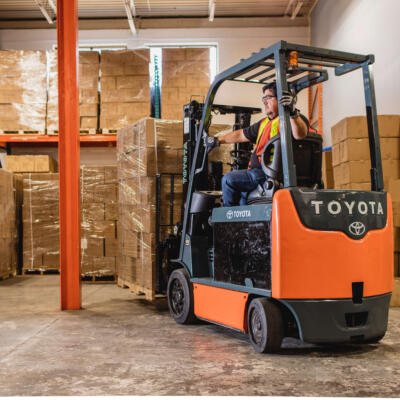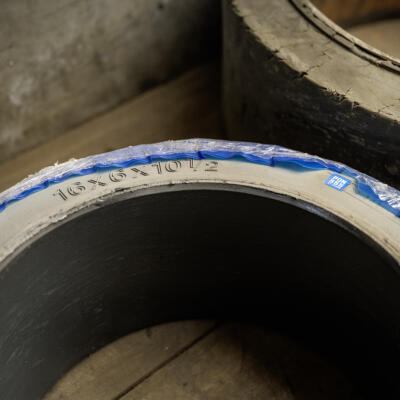Material Handling
|
Product insight
|
07.11.24
What You Need to Know About Industrial Wheels: Types, Tips & Safety Guidelines
Properly functioning machines are essential in material handling. While wheels may not be a vehicle’s “star” component, using the right industrial wheels is crucial for operational efficiency, safety, and equipment longevity. Since everything is interconnected, from operator handling to choice of tire, it can be good to have a basic understanding of industrial wheels.
What’s the difference between wheel and rim?
People often mix up the terms “wheel” and “rim”.
Wheel: Entire circular structure connecting the vehicle to the road. Includes the rim, and the wheel disc. Most wheels are disc-type wheels consisting of a rim serving as the seat of the tire, welded to a disc connecting the rim to the wheel hub.
Rim: Seat of the tire (not containing the disc).
Wheel: Entire circular structure connecting the vehicle to the road. Includes the rim, and the wheel disc. Most wheels are disc-type wheels consisting of a rim serving as the seat of the tire, welded to a disc connecting the rim to the wheel hub.
Rim: Seat of the tire (not containing the disc).
01.
Types of Industrial Wheels
Industrial wheels are not one-size-fits-all; they vary significantly in design and functionality to suit different applications.
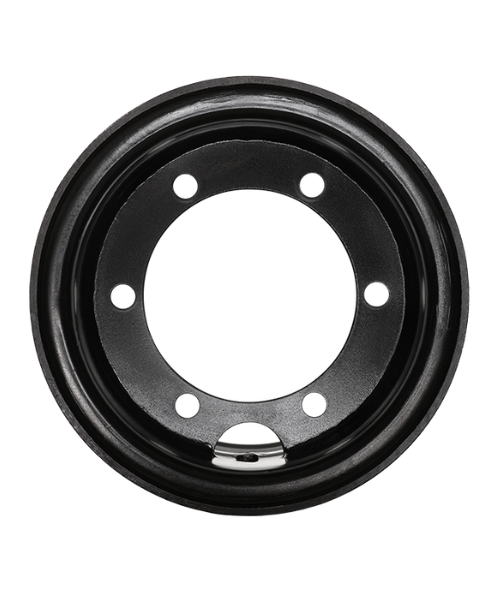
• Designed also for heavy-duty applications.
• Depending on the type, wheels can be mounted with resilient, tube-type, or tubeless tires (with tubeless, an O-ring or rubber sealing ring is needed to prevent air from escaping on the side of the removable rings).
• Referred to as “Quick Heels” when sold without rings (quick heel resilient tires can be mounted without rings only on MPW complying with ETRTO standards).
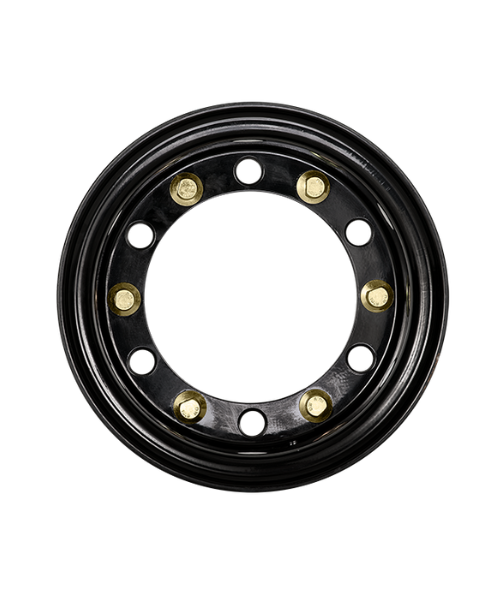
• Consist of two halves bolted (clamped) together and attached to the wheel hub.
• Lower load capacity/inflation pressure than MPW.
• Used on forklift trucks and baggage carts.
• Bolts must always face away from the machine, never towards it.
• Hexagonal bolts can only be used for solid tires, not for pneumatics.
02.
Tips for Choosing the Right Industrial Wheels
Selecting the right wheels will ensure equipment longevity and performance and contribute to a safer working environment. Here are two key criteria to keep in mind.
Load Capacity
Ensure wheels can handle the load requirements. Overloading can lead to failure and safety hazards.
Tire and Equipment Compatibility
Incompatibility may lead to a slew of problems: improper fit, poor alignment, subpar performance, unreliable load transmission, unexpected equipment damage, and serious safety risks. Even minor differences can be critical.
For example:
• All mounting parts must fit exactly to the wheel being mounted. Incorrect combination of parts (different type, shape of radius/angle, length) may cause nut loosening or wheel failure.
• Wheels, wheel mounting face, and rims must be of the right size and design (including the offset and bolt pattern).
• Check wheel specifications for width, center diameter, pitch circle diameter, bolt diameter and shape and offset.
• Rings from different rim types may look similar but aren’t always interchangeable. For multipiece wheels, ensure the wheel and rings come from the same manufacturer—incorrect rings can lead to wheel failure and serious mounting or service accidents.
Industrial Wheel Types
Load Capacity
Ensure wheels can handle the load requirements. Overloading can lead to failure and safety hazards.
Tire and Equipment Compatibility
Incompatibility may lead to a slew of problems: improper fit, poor alignment, subpar performance, unreliable load transmission, unexpected equipment damage, and serious safety risks. Even minor differences can be critical.
For example:
• All mounting parts must fit exactly to the wheel being mounted. Incorrect combination of parts (different type, shape of radius/angle, length) may cause nut loosening or wheel failure.
• Wheels, wheel mounting face, and rims must be of the right size and design (including the offset and bolt pattern).
• Check wheel specifications for width, center diameter, pitch circle diameter, bolt diameter and shape and offset.
• Rings from different rim types may look similar but aren’t always interchangeable. For multipiece wheels, ensure the wheel and rings come from the same manufacturer—incorrect rings can lead to wheel failure and serious mounting or service accidents.
Industrial Wheel Types
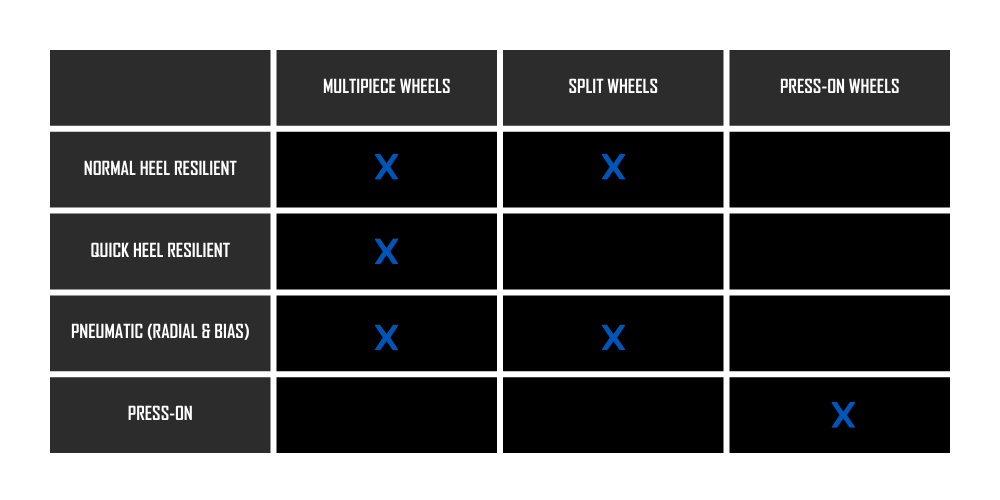
03.
Safety Guidelines
Perform Regular Inspections & Upkeep
Wheels and tires need different maintenance to remain in good condition, prevent downtime, and extend equipment lifespan.
• Ensure components are in good condition and securely fastened.
• Check tires for signs of wear.
• Check wheels for damage such as cracks or deformation. Never repair damaged wheels by heating, welding, plastic deformation, or by adding or removing material.
• Replace wheels showing fractures, deformations, distortions, severe corrosion, or other similar defects.
Properly Clean Wheels
Regularly clean wheels to remove dirt and debris, which can cause imbalances and vibrations, lead to uneven tire wear and hinder vehicle performance.
• Clean, treat, and repaint rust and/or paint scratches. Use appropriate cleaning agents and tools to remove contaminants without damaging the wheel.
• Use a neutral non-aggressive mounting paste to lubricate the outside of rim seats and tire beads. Never use solvent-based lubricants or flammable starting fluids.
• To avoid damage to tires during installation and use, debur any sharp edges, burrs or uneven areas that might have occurred during servicing. Cover with suitable paint to protect against corrosion.
Keep Tires Properly Inflated
Correct tire pressure is crucial for both radial and bias tires. Under- or over-inflated tires can lead to uneven wear and tire failure.
• Before inflating tires on multipiece wheels, make sure the lock rings or loose flange rings are positioned correctly.
• When inflating tires, place a safety cage or safety chains around the wheel and stay outside the danger zone.
• When mounting tires (especially tubeless) on wheels, inspect the valve and replace the stem if necessary.
• When removing tires on multipiece wheels and divided (split) type wheels, always fully deflate tires before starting any removal procedures.
Follow Manufacturer Guidelines
• Following maintenance and usage guidelines will help optimize performance and safety.
• Check load/speed indices for individual components to ensure they suit your needs.
• Fasten screws or nuts on all disc wheels to the recommended torque. Use a torque wrench and tighten progressively, never in one go.
• Verify mounting torque on new vehicles, after replacing a wheel or tire, and after approximately 50-100 km of operation.
Wheels and tires need different maintenance to remain in good condition, prevent downtime, and extend equipment lifespan.
• Ensure components are in good condition and securely fastened.
• Check tires for signs of wear.
• Check wheels for damage such as cracks or deformation. Never repair damaged wheels by heating, welding, plastic deformation, or by adding or removing material.
• Replace wheels showing fractures, deformations, distortions, severe corrosion, or other similar defects.
Properly Clean Wheels
Regularly clean wheels to remove dirt and debris, which can cause imbalances and vibrations, lead to uneven tire wear and hinder vehicle performance.
• Clean, treat, and repaint rust and/or paint scratches. Use appropriate cleaning agents and tools to remove contaminants without damaging the wheel.
• Use a neutral non-aggressive mounting paste to lubricate the outside of rim seats and tire beads. Never use solvent-based lubricants or flammable starting fluids.
• To avoid damage to tires during installation and use, debur any sharp edges, burrs or uneven areas that might have occurred during servicing. Cover with suitable paint to protect against corrosion.
Keep Tires Properly Inflated
Correct tire pressure is crucial for both radial and bias tires. Under- or over-inflated tires can lead to uneven wear and tire failure.
• Before inflating tires on multipiece wheels, make sure the lock rings or loose flange rings are positioned correctly.
• When inflating tires, place a safety cage or safety chains around the wheel and stay outside the danger zone.
• When mounting tires (especially tubeless) on wheels, inspect the valve and replace the stem if necessary.
• When removing tires on multipiece wheels and divided (split) type wheels, always fully deflate tires before starting any removal procedures.
Follow Manufacturer Guidelines
• Following maintenance and usage guidelines will help optimize performance and safety.
• Check load/speed indices for individual components to ensure they suit your needs.
• Fasten screws or nuts on all disc wheels to the recommended torque. Use a torque wrench and tighten progressively, never in one go.
• Verify mounting torque on new vehicles, after replacing a wheel or tire, and after approximately 50-100 km of operation.
04.
Why Choose Camso Industrial Wheels
For over 25 years, Camso has been a leading supplier of high-quality industrial wheels and assemblies for OEMs worldwide, offering both standard and customized solutions. With a global network of facilities and strict adherence to international standards, we ensure precise specifications and fast delivery
Explore Camso’s complete range of products and services
Access technical datasheet for wheel measurements
Learn more about what Solideal On-Site Service can do for you
To know more about our Quick heel technology solution
Access technical datasheet for wheel measurements
Learn more about what Solideal On-Site Service can do for you
To know more about our Quick heel technology solution













